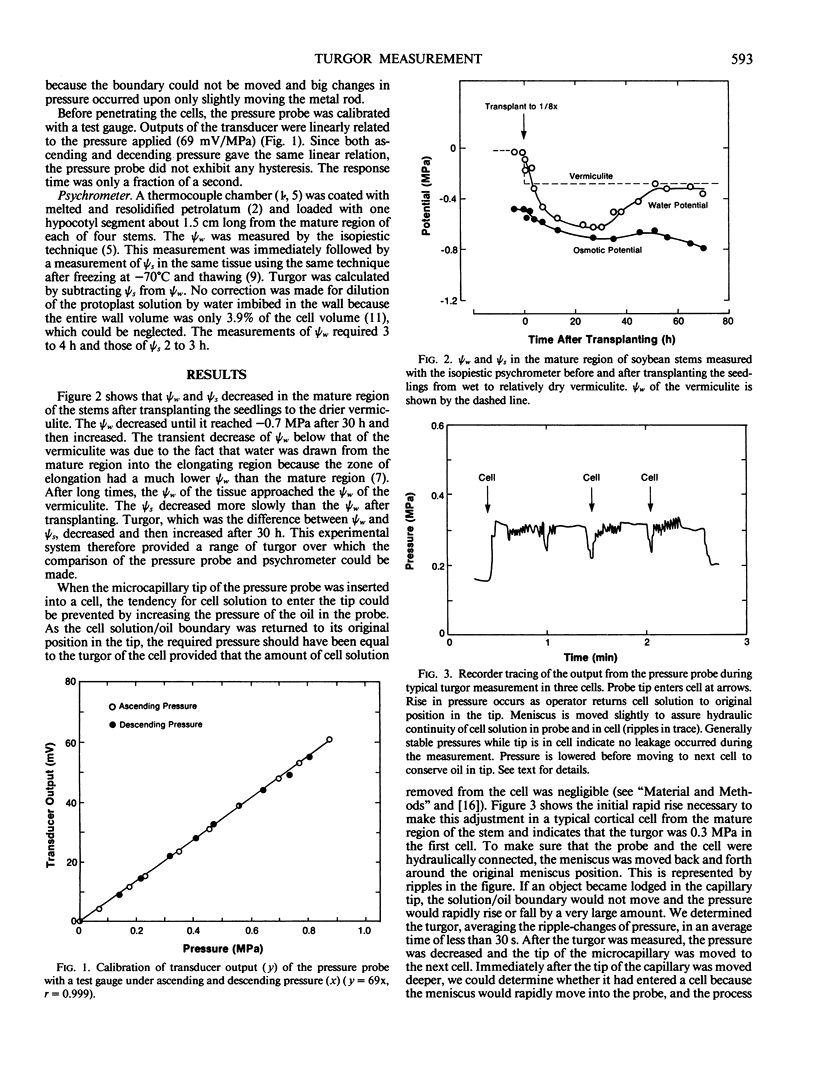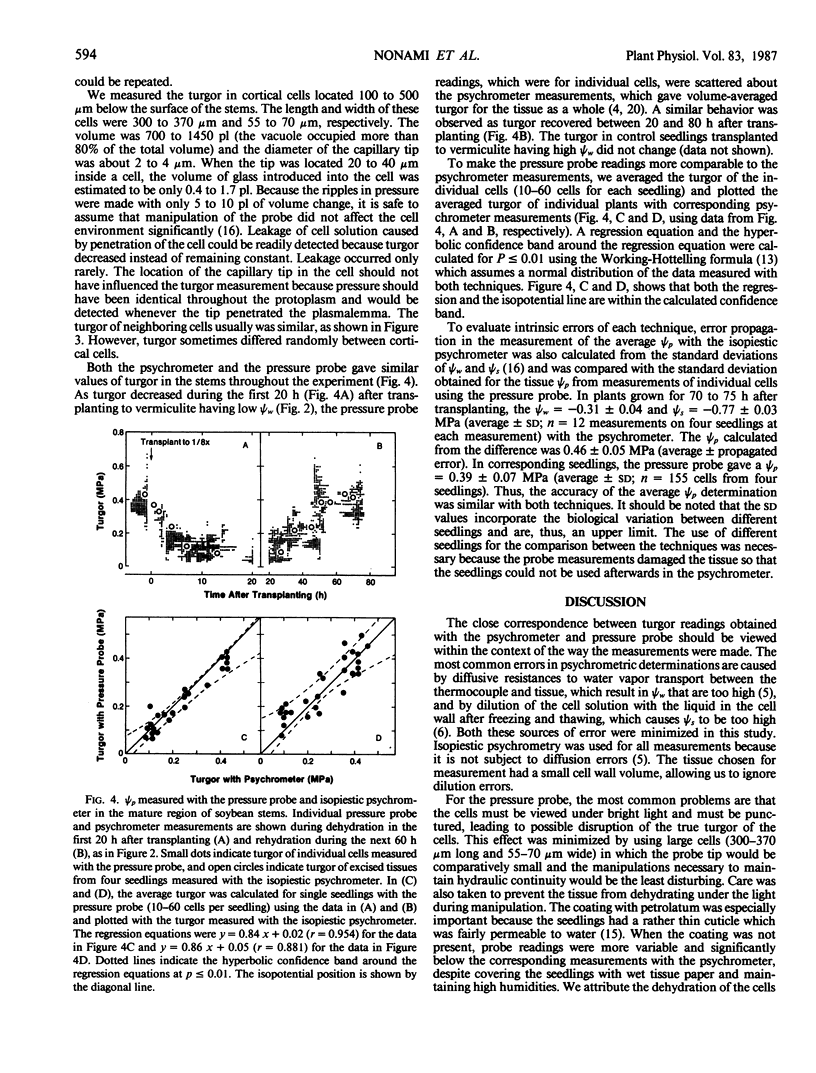Abstract
Turgor measured with a miniature pressure probe was compared to that measured with an isopiestic thermocouple psychrometer in mature regions of soybean (Glycine max [L.] Merr.) stems. The probe measured turgor directly in cells of intact stems whereas the psychrometer measured the water potential and osmotic potential of excised stem segments and turgor was calculated by difference. When care was taken to prevent dehydration when working with the pressure probe, and diffusive resistance and dilution errors with the psychrometer, both methods gave similar values of turgor whether the plants were dehydrating or rehydrating. This finding, together with the previously demonstrated similarity in turgor measured with the isopiestic psychrometer and a pressure chamber, indicates that the pressure probe provides accurate measurements of turgor despite the need to penetrate the cell. On the other hand, it suggests that as long as precautions are taken to obtain accurate values for the water potential and osmotic potential, turgor can be determined by isopiestic psychrometry in tissues not accessible to the pressure probe for physical reasons.
Full text
PDF



Selected References
These references are in PubMed. This may not be the complete list of references from this article.
- Boyer J. S. Isopiestic technique: measurement of accurate leaf water potentials. Science. 1966 Dec 16;154(3755):1459–1460. doi: 10.1126/science.154.3755.1459. [DOI] [PubMed] [Google Scholar]
- Boyer J. S. Leaf water potentials measured with a pressure chamber. Plant Physiol. 1967 Jan;42(1):133–137. doi: 10.1104/pp.42.1.133. [DOI] [PMC free article] [PubMed] [Google Scholar]
- Boyer J. S., Potter J. R. Chloroplast response to low leaf water potentials: I. Role of turgor. Plant Physiol. 1973 Jun;51(6):989–992. doi: 10.1104/pp.51.6.989. [DOI] [PMC free article] [PubMed] [Google Scholar]
- Cavalieri A. J., Boyer J. S. Water potentials induced by growth in soybean hypocotyls. Plant Physiol. 1982 Feb;69(2):492–496. doi: 10.1104/pp.69.2.492. [DOI] [PMC free article] [PubMed] [Google Scholar]
- Cleland R. E. The control of cell enlargement. Symp Soc Exp Biol. 1977;31:101–115. [PubMed] [Google Scholar]
- Ehlig C. F. Measurement of Energy Status of Water in Plants With a Thermocouple Psychrometer. Plant Physiol. 1962 May;37(3):288–290. doi: 10.1104/pp.37.3.288. [DOI] [PMC free article] [PubMed] [Google Scholar]
- Hüsken D., Steudle E., Zimmermann U. Pressure probe technique for measuring water relations of cells in higher plants. Plant Physiol. 1978 Feb;61(2):158–163. doi: 10.1104/pp.61.2.158. [DOI] [PMC free article] [PubMed] [Google Scholar]
- Molz F. J. Growth-induced Water Potentials in Plant Cells and Tissues. Plant Physiol. 1978 Sep;62(3):423–429. doi: 10.1104/pp.62.3.423. [DOI] [PMC free article] [PubMed] [Google Scholar]
- Steudle E. Water-relation Parameters of Individual Mesophyll Cells of the Crassulacean Acid Metabolism Plant Kalanchoë daigremontiana. Plant Physiol. 1980 Dec;66(6):1155–1163. doi: 10.1104/pp.66.6.1155. [DOI] [PMC free article] [PubMed] [Google Scholar]
- Twente J. W., Twente J. A. Regulation of hibernating periods by temperature. Proc Natl Acad Sci U S A. 1965 Oct;54(4):1044–1051. [PMC free article] [PubMed] [Google Scholar]


